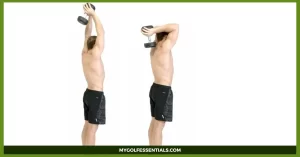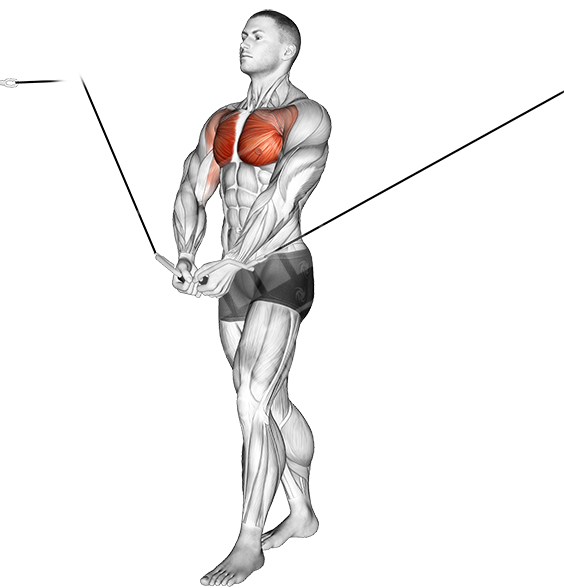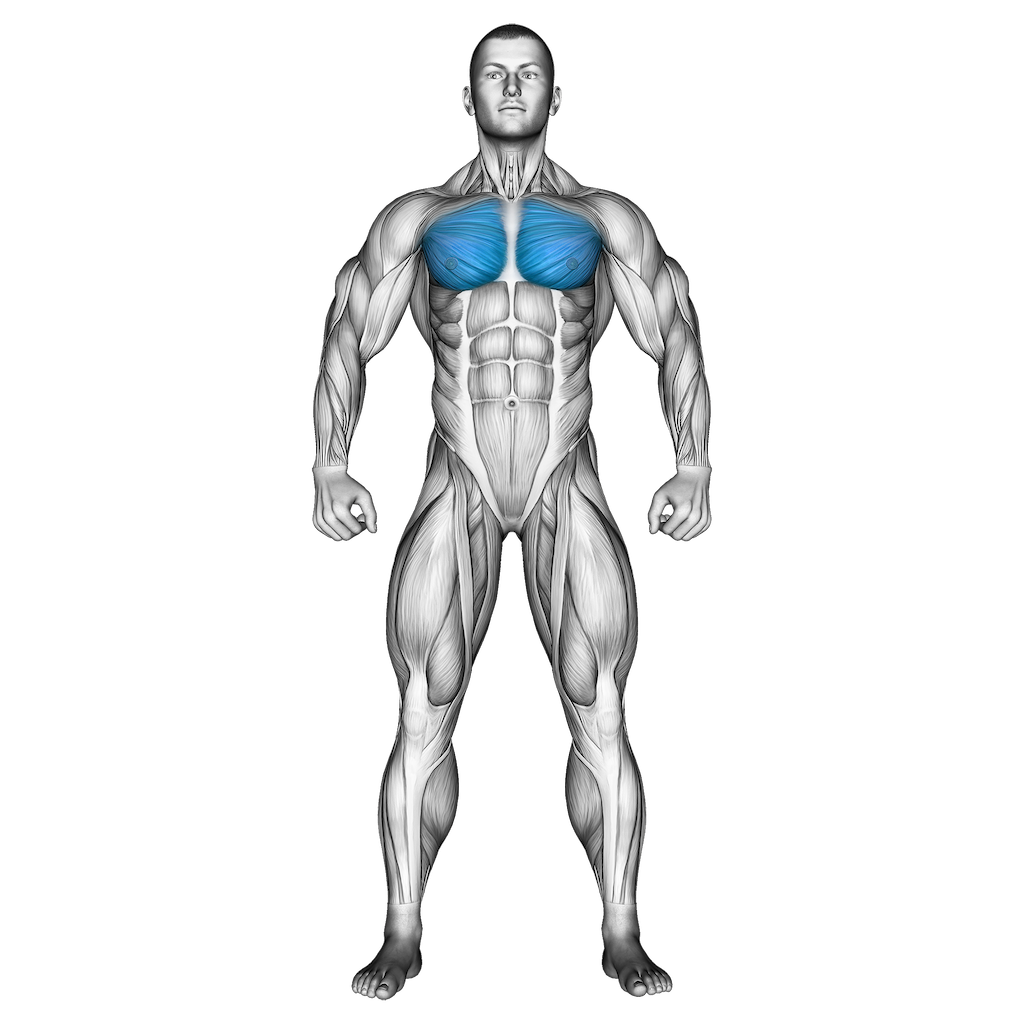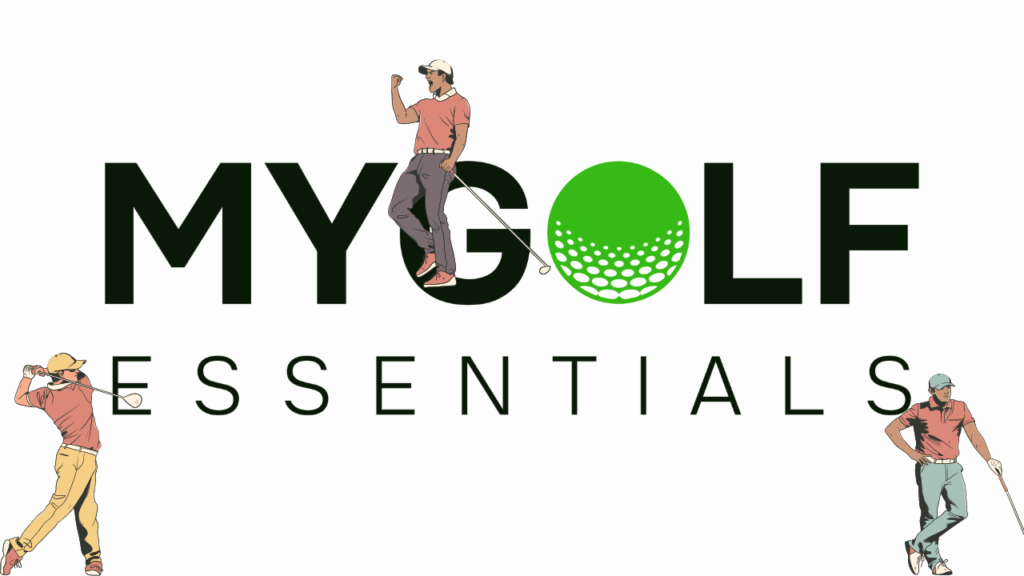
Are you looking for effective exercises to get your triceps toned and sculpted? If so, dumbbell tricep exercises are a great place to start! Working out with dumbbells can provide an unbeatable full-body workout, helping you reach your fitness goals.
In this blog post, we will discuss several different Dumbbell Tricep Exercises that target the same muscles as more traditional moves but add a layer of challenge and complexity. With the help of these exercises, you’ll be able to take your arm day workouts up a notch and sculpt those fabulous triceps that everyone craves!
Introduce triceps and their importance to upper body strength
At the back of your upper arm lies your elbow joint. The triceps, situated here, play a crucial role in counterbalancing the action of your biceps to ensure smooth arm functioning. In essence, any movement that extends the arm or rotates the elbow involves the triceps. Therefore, maintaining strong triceps isn’t just about aesthetics; it’s essential for optimal upper body strength and movement.
Developing your triceps through exercises like the ones we will present is key to enhancing your overall upper-body strength. Strong triceps improve your ability to perform push movements, whether pushing open a heavy door or excelling in sports like basketball or swimming.
Additionally, tricep strength is crucial for weightlifters and bodybuilders as it underpins performance in exercises like bench press and shoulder press. By incorporating dumbbell tricep exercises in your routine, you’re working towards toned arms and a stronger and more capable upper body.
Describe the Benefits of Using Dumbbells for Tricep Exercises
Using dumbbells for tricep exercises offers several key benefits. First, dumbbells allow for a greater range of motion than other weightlifting equipment, enabling you to fully engage and stretch your triceps for maximum muscle growth. This range of motion can improve muscle balance and joint stability, which is critical for overall body strength and injury prevention.
Secondly, dumbbell training promotes muscle symmetry, which is essential for achieving a balanced and proportional physique. As dumbbells require each arm to work independently, they help prevent muscle imbalance, where one arm is stronger than the other. Moreover, they allow for unilateral training, which means you can work on each arm separately, targeting and improving specific weaknesses.
Dumbbell exercises also require greater stabilization and engagement of your core, offering an additional layer of challenge and strength-building to your tricep workouts. So, dumbbell tricep exercises are effective for your arms and contribute to your overall fitness journey, enhancing strength and balance in your entire body.
Demonstrate the Proper Grip from Tricep Exercises with Dumbbells
Before diving headfirst into our recommended exercises, it’s crucial to understand the proper grip and form when performing dumbbell tricep exercises. Your grip while working out can significantly impact the exercise’s effectiveness and safety. For most dumbbell tricep exercises, a neutral or “hammer” grip is recommended, where the palms face towards each other.
This grip places less stress on your wrists, allowing you to place the focus on your triceps without discomfort or the risk of injury. The dumbbell should rest in the center of your palm to prevent unnecessary strain on your wrists. The form is equally important in executing these exercises. Always maintain a straight back with your core engaged, whether standing or sitting. Only your forearm should move when performing an exercise, keeping your upper arms and elbows stationary.
This isolates the tricep and makes the exercise more effective. Avoid locking your elbows at the movement’s top, leading to joint strain. Always control the weights both on the way up and on the way down. The downward phase is as important as the upward phase in muscle development, so don’t let gravity do the work for you. By keeping these tips in mind, you can make the most out of your dumbbell tricep exercises while minimizing the risk of injury.
Benefits of Training the Triceps With Dumbbells
Training the triceps with dumbbells not only helps build muscle mass and strength but also aids in burning calories, improving bone health, and enhancing functional fitness. As the triceps make up a significant portion of your arm, developing these muscles can make your arms appear more toned and defined. Tricep exercises can also help improve overall upper body strength and stability.
When combined with other forms of strength training, dumbbell tricep exercises can improve physical performance, whether in day-to-day activities or athletic pursuits. In addition to physical improvements, performing dumbbell tricep exercises can also provide psychological benefits. Regular strength training can enhance your body confidence as you notice improvements in strength and appearance.
Moreover, like other forms of exercise, strength training with dumbbells can help alleviate stress and improve mood, thanks to the release of endorphins, known as the ‘feel-good’ hormones. Dumbbell tricep exercises can support your physical and mental health as part of a well-balanced exercise regimen, including cardiovascular and flexibility training.
Anatomy of the Triceps
The triceps at the back of the upper arms play a crucial role in straightening the elbow, contributing significantly to arm size. Comprising three smaller muscles layered on each other, the triceps enhance pressing strength and muscle endurance, proving valuable in exercises like bench presses, push-ups, and overhead presses. Among these muscles is the long head of the triceps, a long muscle running the length of the arm, from shoulder to elbow.
It’s primarily engaged in elbow extension movements (arm straightening), with overhead triceps extension exercises proving particularly effective in targeting it. The lateral head of the triceps runs along the outside of the back of the arm and is best targeted with exercises such as close grip push-ups, dips, and Tate presses. This muscle is often visible on the side, contributing to the characteristic ‘lump’ on several individuals’ arms.
On the inner side of the arm lies the medial head of the triceps, which is best exercised with underhand grip movements. Exercises like underhand cable pushdown and triceps kickback (with palms facing skyward on reaching back) are highly effective for targeting this muscle. These exercises ensure that all three muscles within the triceps group are specifically targeted, promoting balanced muscle development and upper arm strength.
The 10 best tricep exercises with dumbbells are:
Close-Grip Dumbbell Bench Press
The Close-Grip Dumbbell Bench Press is an effective tricep exercise that targets all three heads of the muscle group, focusing on the lateral and long heads. To perform this exercise, start by lying on a flat bench with a dumbbell in each hand, palms facing each other. Press the dumbbells until your arms are completely extended, keeping the weights together throughout the movement.
Slowly lower the weights until they are near your chest, ensuring your elbows are tucked close to your body and not flared out. Push the dumbbells back up to the starting position, fully extending your arms without locking your elbows. This exercise strengthens your triceps and can also help enhance chest and shoulder strength. The Close-Grip Dumbbell Bench Press is excellent for beginners and advanced exercisers. It’s vital to start with a manageable weight and gradually increase the load as your strength improves.
Always prioritize form overweight to derive the most benefits from the exercise and reduce the risk of injury. This exercise can be incorporated into your upper body workout or part of a dedicated arm day workout. As with any exercise, warm up properly before starting and cool down after the workout.
Dumbbell Floor Press
The Dumbbell Floor Press is a tricep-intensive exercise that can be performed with minimal equipment and space. Start by lying flat on the floor with a dumbbell in each hand. Your knees should be bent and your feet flat on the floor. With your palms facing towards your feet and the dumbbells at chest level, extend your arms fully, pressing the weights up while maintaining control.
Slowly lower the weights back to the starting position, letting your elbows lightly touch the floor before pressing the weights back up. This exercise targets primarily the triceps but also engages the chest and shoulders, making it an excellent multi-joint exercise. When performing the Dumbbell Floor Press, it’s crucial to maintain a controlled motion and not allow your elbows to slam onto the floor. This exercise can be modified to target different areas of the tricep by adjusting the angle of your arms.
For example, holding your arms closer to your body will target the lateral head of the triceps more intensely. As with all exercises, start with a manageable weight and gradually progress as your strength improves. The Dumbbell Floor Press can be integrated into your arm training routine or used as a full-body workout. Always warm up before starting any workout and cool down afterward to aid recovery and prevent injury.
Dumbbell Deficit Push-Up
The Dumbbell Deficit Push-Up is a challenging variation of the traditional push-up that offers an increased range of motion and enhanced triceps activation. Positioning a dumbbell under each hand, prepare for a push-up with your hands slightly wider than shoulder-width apart. Lower your body until your chest almost touches the dumbbells, ensuring your body remains straight. Push back to the starting position, engaging your triceps, chest, and shoulders.
This exercise works the triceps and strengthens core stability and shoulder mobility, making it an excellent full-body exercise. Take care to maintain a correct form to prevent undue strain on your back or shoulders. Start with lighter dumbbells to get comfortable with the movement before progressing to heavier weights. As you increase the load, ensure your wrists align with the shoulders to avoid any potential injuries.
Beginners can modify this exercise by performing it on their knees until they build sufficient strength. The Dumbbell Deficit Push-Up can be combined with other push-up variations, dips, bench presses, and skull crushers to create a holistic triceps training routine that promotes muscular strength and endurance. Always warm up before your workout and cool down afterward to promote recovery and prevent injury.
Dumbbell Skullcrusher
The Dumbbell Skullcrusher is an isolated tricep exercise known for effectively targeting all three heads of the tricep muscle group. To perform this exercise, lay on a flat bench, holding a dumbbell in each hand. With your arms fully extended above your chest and palms facing each other, bend at the elbow to lower the dumbbells until they are near your forehead – hence the name ‘Skullcrusher.’ While your elbows remain stationary, the movement should come from the forearms.
Push the weights back up by extending your forearms, squeezing the triceps at the movement’s top. The key to executing this exercise safely and efficiently is to utilize control throughout the entire motion. The Dumbbell Skullcrusher is excellent for developing tricep strength and muscle mass. It’s important to start with a weight you can control and gradually increase as your strength improves.
Avoid rushing the movement and extend fully at the top to engage the triceps completely. Due to its direct focus on the tricep muscles, the Dumbbell Skullcrusher is a great addition to an arm-specific workout or can be combined with other upper-body exercises for a more comprehensive workout. Always remember to warm up before beginning your workout, cool down, and stretch afterward to aid recovery and prevent injury.
Incline Skullcrusher
The Incline Skullcrusher is another effective tricep exercise that targets the tricep muscle’s long head by changing the movement’s angle. To perform this exercise, lie on an incline bench with a dumbbell in each hand. Hold the dumbbells above your chest with your arms extended and your palms facing each other. Without moving your upper arms, bend your elbows to lower the dumbbells until they are close to your forehead.
Push the weights back up by extending your forearms and squeezing the triceps at the movement’s top. The angle of the incline bench can be adjusted to target different areas of the tricep muscle. As with all tricep exercises, it’s crucial to maintain control throughout the movement and avoid locking the elbows to keep tension on the triceps. The Incline Skullcrusher can be challenging, so start with a lighter weight to ensure proper form and gradually increase the weight as your strength improves.
This exercise can be incorporated into an arm-specific workout or combined with other upper-body exercises for a more comprehensive workout. The Incline Skullcrusher is a great way to add variety to your training routine and challenge your triceps in a new way. As always, warm up properly before beginning your workout and cool down afterward to promote recovery and prevent injury.
Dumbbell Overhead Triceps Extension
The Dumbbell Overhead Triceps Extension is a classic exercise for strengthening and building the tricep muscles. This movement isolates the triceps by holding a single dumbbell with both hands overhead, then lowering it behind the head by bending the elbows. After reaching a deep stretch, the dumbbell is lifted back to its original position by extending the elbows while keeping the upper arms stationary throughout the movement.
The overhead position of this exercise helps target the long head of the triceps, the largest part of the muscle group, making it an essential part of any arm-building routine. Initiate this exercise with a manageable weight to maintain proper form, focusing on slow, controlled movements rather than speed. Be careful not to let your elbows flare out to the sides, and keep them close to your head to ensure the focus remains on the triceps.
Also, be mindful of your core and keep it engaged throughout to help maintain balance. This exercise can be performed standing or seated, but a seated position can help prevent any arching in the lower back, which may occur when trying to lift heavier weights. The Dumbbell Overhead Triceps Extension can be combined into a comprehensive arm or total body workout like other exercises. Warm up before starting and cool down after finishing to optimize recovery and minimize the risk of injury.
Dip with Dumbbell
The Dip with Dumbbell is a dynamic compound exercise that targets the triceps and engages the shoulders, chest, and core muscles. To perform this exercise, sit on the edge of a sturdy bench or chair with your hands resting next to your hips and fingers facing forward. Place a dumbbell on your lap, then slide forward just far enough that your hips clear the edge of the bench. Bend your knees at 90 degrees and keep your feet flat on the floor.
Lower your body by bending your elbows, keeping them close to your body, and pointing directly behind you. Press back to the starting position by extending your elbows and pushing your body upward. This complete motion constitutes one repetition. This exercise is an excellent way to strengthen and tone the triceps. Be sure to start with a lightweight, focusing on form and control to prevent injury.
As your strength and stability improve, the weight can gradually increase to provide a more challenging workout. Keeping your core engaged throughout the exercise is important to stabilize your body and protect your lower back. Dumbbell dips can be incorporated into an upper-body workout or performed alone as a strength-building exercise. Always remember to warm up before the exercise and cool down afterward to aid in recovery and injury prevention.
Dumbbell Tate Press
The Dumbbell Tate Press is another versatile tricep exercise that targets all three heads of the triceps but primarily focuses on the lateral head. Named after powerlifter Dave Tate, this exercise begins with the lifter lying flat on a bench, holding a pair of dumbbells directly above the chest with elbows bent at a 90-degree angle palms facing the feet. The movement involves extending the arms, pushing upwards and slightly inwards to bring the weights together at the top, fully contracting the triceps.
This exercise requires high control and caution to avoid weight loss. It’s advisable to start with a manageable weight, gradually increasing it as strength and mastery of the movement improve. The Dumbbell Tate Press is a great addition to any arm workout, particularly for those looking to improve the definition of their triceps. Maintaining a slow and controlled movement throughout the exercise is important, focusing on the contraction and extension of the triceps muscles.
It’s also crucial to keep the elbows close together, as flaring them out can reduce the effectiveness of the exercise and increase the risk of injury. As with all exercises, warm up properly before starting and cool down afterward to promote recovery and prevent injury. Do not forget to engage your core throughout the exercise to maintain balance and stabilize your body. The Dumbbell Tate Press is an effective, targeted move that can add diversity to your arm-training routine and increase your upper body strength.
Incline Dumbbell Triceps Kickback
The Incline Dumbbell Triceps Kickback is a variation of the traditional triceps kickback exercise that shifts the focus to the long head of the triceps. To perform this exercise, place a bench at an incline and lean against it with one knee and the same side hand while holding a dumbbell in the other hand. Keep your upper arm close to your body and parallel to the ground.
The movement involves extending the arm backward until straight, contracting the triceps at the top, then slowly lowering the weight to the starting position. This exercise emphasizes control, requiring the lifter to maintain tension in the triceps throughout the entire movement. Start with a light weight and gradually increase as your strength and control improve. The unique incline position of this exercise means the triceps are under constant tension, promoting muscle growth and improving muscular endurance.
The Incline Dumbbell Triceps Kickback is an excellent choice for those looking to add variety to their tricep workouts and challenge their muscles in a new way. As with all exercises, proper form is crucial to prevent injury and maximize results. Engage your core throughout the exercise to maintain balance and support your lower back. Always remember to warm up before the exercise and cool down afterward to aid in recovery and prevent injury. This exercise can be added to any upper body workout or performed alone as a stand-alone tricep strengthening exercise.
Dumbbell JM Presses
The Dumbbell JM Press is a hybrid exercise combining elements of a close-grip bench press and a skull crusher. Named after powerlifter J.M. Blakely, this exercise begins with the lifter lying flat on a bench, holding a pair of dumbbells directly above the chest with arms fully extended. The weights are lowered towards the shoulders by bending the elbows, keeping the upper arms stationary.
The Dumbbell JM Press primarily targets the triceps, particularly the lateral head. It requires precise form and control to prevent injury. Thus, it’s advisable to start with a lightweight, gradually increasing it as strength and form improve. As with all exercises, a proper warm-up before starting and a cool-down after the exercise are vital for recovery and injury prevention. This move can be valuable to any arm or upper body workout.
FAQs
What are the benefits of dumbbell tricep exercises?
Dumbbell tricep exercises are a great way to build strength and tone in your arms. They target all three heads of the triceps muscle, which can result in a more balanced, full look. These exercises can also improve overall upper body strength, enhance muscular endurance, and even help reduce the risk of injury by building strong, stable joints.
Controlled movement during dumbbell tricep exercises necessary?
Maintaining a slow and controlled movement is crucial while performing triceps exercises. Rapid, jerky movements can risk injury and reduce the workout’s effectiveness. A slow, upper arm bone controlled execution ensures that the tricep muscles are under tension for a greater period, which can lead to better muscular development.
Why is it important to engage the core during these exercises?
Engaging the core during exercises helps to stabilize the body, maintain balance, and support the lower back. It also ensures that the targeted muscles (in this case, the triceps) are doing most of the work, leading to a more effective workout.
How often should I perform these dumbbell tricep exercises?
The frequency of best dumbbell triceps exercises depends on your fitness goals, current fitness level, and overall workout routine. However, a common recommendation is to train the triceps 2-3 times weekly, allowing at least 48 hours of rest between sessions for muscle recovery and growth.
Can beginners perform these dumbbell tricep exercises?
Beginners can perform these exercises. Starting with a lightweight is advisable to establish good form and control. As strength and stability improve, the weight can be gradually increased. As with any new exercise, beginners should seek guidance from a fitness professional to ensure proper technique and prevent injury.
Conclusion
I hope this article has given you an insight into the benefits of incorporating dumbbell triceps exercises into your workout routine. These targeted movements can help strengthen and tone your arms and improve overall upper body strength and muscular endurance. It’s important to remember that a combination of proper form and control during execution is key to achieving desired results and preventing injury.



